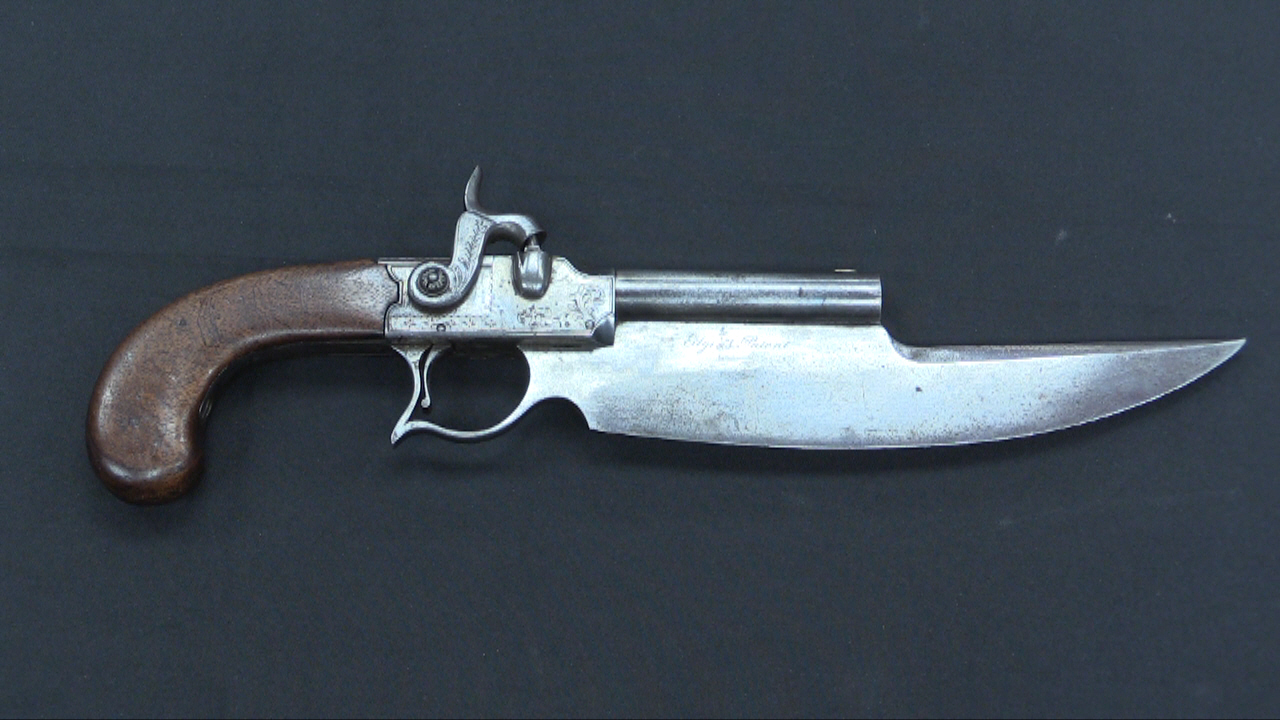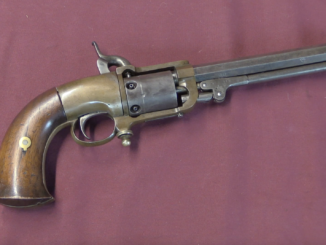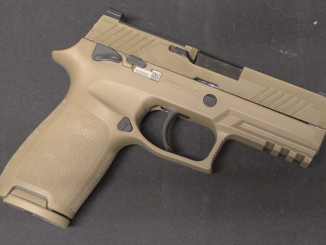These are lots #133 (from-scratch rifle) and #134 (muzzleloader conversion) in the upcoming RIA Premier Auction. It was scheduled for April, but has been postponed – check their web site for upcoming Online Only auctions every month, though!
Barton Jenks was parts of a family rifle with inventors. These included Joseph Jenks, who was granted the first patent in the American colony in 1646 (for a sawmill design), his uncle William Jenks who created the Jenks Mule-Ear carbine, and his father Alfred who was an innovator in textile machinery. When the Civil War began, Alfred and Barton had a very successful company manufacturing machines for working wool and cotton in Bridesburg Pennsylvania. They tooled up to make rifles for there Union, delivering more the 100,000 during the war, and in the aftermath of the conflict Barton invented a rolling-block style system to convert muzzleloaders into breechloaders.
Unlike the Remington rolling block, the Jenks Model 1867 did not rely on the hammer to lock the breech, and thus was able to integrate the breech opening and rechecking into a single action. He submitted his rifle to both US military and New York State trials in 1867, but it failed to win either. Jenks did not opt to continue work on the design, instead moving to other fields and inventing mining equipment in the 1870s.




It looks as if it would be possible to drop the hammer with a breech out of battery with this design, as the hammer is cocked while the breech is not fully closed until the spur is pushed forward. Is there some sort of out of battery safety that you did not demonstrate?
Is it possible to fire with the breech not fully locked?
Bridesburg was annexed by Philadelphia in 1954. To this day, that neighborhood is still called ‘Bridesburg’. Thus, bother references probably refer to the very same factory.
https://en.wikipedia.org/wiki/Bridesburg,_Philadelphia
My typo. Bridesburg was annexed in 1854, not 1954.
Not the same kind of wagons in the streets…
This gun looks very much to Flobert’s Saloon pistols patented earlier. lMHO…
In the video it appears the mechanism would be rather restrictive on the overall cartridge length, as opposed to the Remington rolling blocks. Is this correct, or is it just the camera angle?
The extractor would pull the case out far enough for the shooter to grab it and pull it up, back and out at an angle. Still, it probably would require a case with shorter OAL than the .50-70 or .45-70.
Being originally designed as a rimfire conversion of a rifle-musket, it almost certainly was chambered for the .58 U.S. Musket rimfire cartridge;
http://www.municion.org/altres/58UsMusketRF.htm
Aka the 14.5 x 27RmmRF (short version) or 14.5 x 35Rmm RF (long version).
Either one has a considerably shorter case length and OAL than its centerfire .50 and .45 caliber successors.
cheers
eon
http://municion.org/
The site seems to be corrupted…
Interestingly, this is for a long time or for good?
I think that in those years, cartridges with a solid metal case were still not very common among civilian users. Basically, cartridges with a composite case were available that did not experience extraction problems.
Is it known if Remington knew of this design and / or toyed with its ‘system’
In 1866 USA Ordnance Board tested 2 Jenks modified Sprinfield muskets and one new musket and one new carbine both adapted to either rimfire or centerfire . All 3 muskets were withdrawn for repairs. Musket number 1 was withdrawn after 29 fires due to failure to extract. The muskets were repaired and resubmitted.
Here is a link to an 1866 Annual report to the secretary of war in which is says that they tested four guns presented by Jenks. Two conversions and two new ones. Are we sure that the guns Ian is looking at are dated correctly at 1867?
https://play.google.com/store/books/details?id=E5sdAQAAIAAJ&rdid=book-E5sdAQAAIAAJ&rdot=1